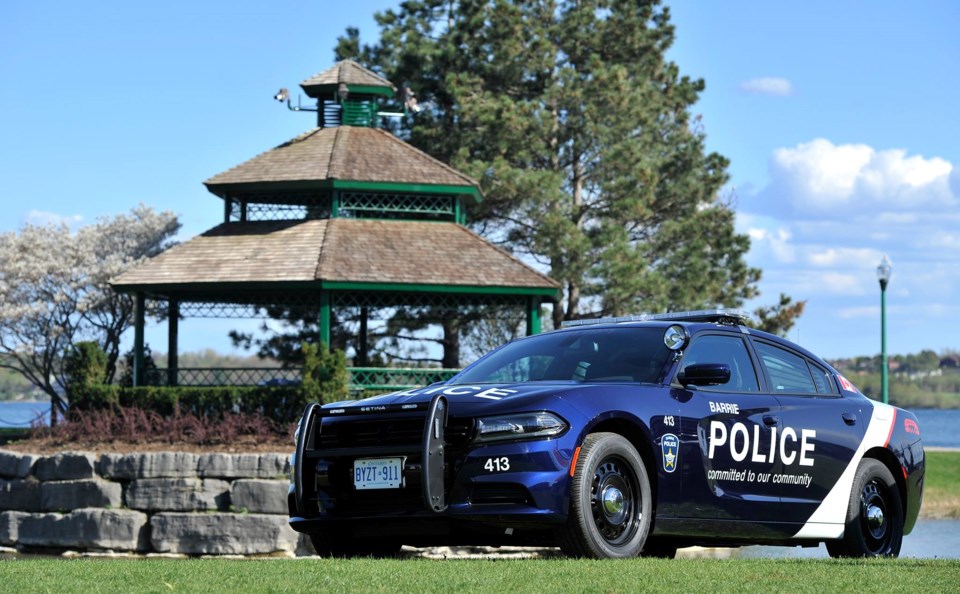Barrie police responded to about 10,000 more calls for service in 2019 compared to 2018.
The force recently released their annual crime statistics for 2019, which outlines crime experienced in the city, as well as statistics on investigations and use of force.
“2019 was an incredible year,” said Barrie police Chief Kimberley Greenwood. “Barrie Police were part of the team that led the investigation into one of the largest labour human trafficking operations in Canadian history, navigated the first full year with legalized cannabis, developed and launched the Canadian Framework for Collaborative Police Response on Sexual Violence and launched our digital evidence management system.
"These milestones are just some of the examples of how we continue to position our organization to meet the growth and changing demands of our community,” she said.
In 2019, Barrie police responded to 74,112 calls for service, which was a significant increase from the 64,988 calls they responded to in 2018; 58,345 were for non-criminal matters, while 15,506 were for criminal matters. Hang-ups accounted for 14,495 calls.
The top-5 reasons for calls were traffic stops, police assistance, community services which include community presentations, unwanted persons and suspicious persons.
One of the major new programs started through the force in January 2019 was the COAST (Community Outreach and Support Team) program, which partners an officer with a mental health support worker from the Canadian Mental Health Association (CMHA) to respond to mental health calls.
Staff Sgt. Val Gates is one of the officers responsible for assembling the report.
“We know there is a need to address mental health issues here in Barrie,” said Gates. “Since police are available 24/7, we are the ones who respond to a lot of these calls. The idea was to be a little more proactive and put the police and CMHA together.”
In the first year, the program saw 107 911-calls for service, 572 Mental Health Act calls for service, 281 follow-ups and 90 emergency room diversions.
“This relationship has been invaluable. Members of the vulnerable community are feeling more trusting of the police and they’re getting connected to services much quicker than they were before,” said Gates. “It has been very successful.”
Property crime occurrences were, for the most part, down over 2018 numbers.
In 2019, there were 373 break and enters, 62 cases of theft over $5,000, 2,302 cases of theft under $5,000, 237 cases of possession of stolen property, 757 cases of mischief, 629 cases of fraud and two arsons.
Violent crime occurrences were mostly up over 2018 numbers, with one major jump noted.
There were three human trafficking occurrences in 2018. In 2019, those numbers leapt up to 65 occurrences.
According to Gates, a major portion of that number is attributable to a labour human trafficking bust that occurred in February where 43 victims were rescued.
“As of 2019, we now also have a dedicated human trafficking unit,” said Gates. “We previously had one officer dedicated for half of the year. Now we have two officers completely dedicated to human trafficking. They’re now able to take a more proactive (approach), and that’s probably part of the reason you’re seeing an increase in those stats.”
In 2019, there were four homicides, eight attempted murder occurrences, 225 sexual assaults, 99 robberies and 828 overall assaults.
Child pornography offences were up in 2019, with 22 offences (there were 15 the previous year). As were indecent acts at 27 (21 in 2018). Prostitution offences were down to 10 in 2019 (15 the previous year) and drug charges were down to 336 from 392 in 2018.
Use-of-force statistics for 2019 are also included in the report.
Pepper spray was not discharged by any officer in 2019, according to the report. Batons were used on two occasions. Firearms were drawn 28 times in the line of duty, but only discharged twice. Conducted energy weapons were used 50 times. Physical control was used 17 times, and the canine unit was used four times. Most instances of use of force were down over 2018 numbers.
According to Sgt. Andrew Butler with the Barrie police training unit, use-of-force statistics are based on the types of occurrences to which officers respond. In policing, that changes from one year to the next.
“Although we do not see the same type of crime that larger municipal or regional services see, we still have our fair share of serious incidents that may require an officer to utilize their use-of-force options,” said Butler. “Tactical communication, de-escalation and simply the presence of police are all factors that can determine an outcome.”
Butler says de-escalation training begins when officers are recruits at the Ontario Police College.
“(It) is incorporated into annual training that every officer is required to participate in on a yearly basis; so de-escalation training is a career-long continuous-training concept,” he said.
To access the report in its entirety, click here.





